Features of choosing curtains
For a Scandinavian interior, you need to choose curtains:
- simple and laconic forms;
- calm colors;
- made of natural fabrics.
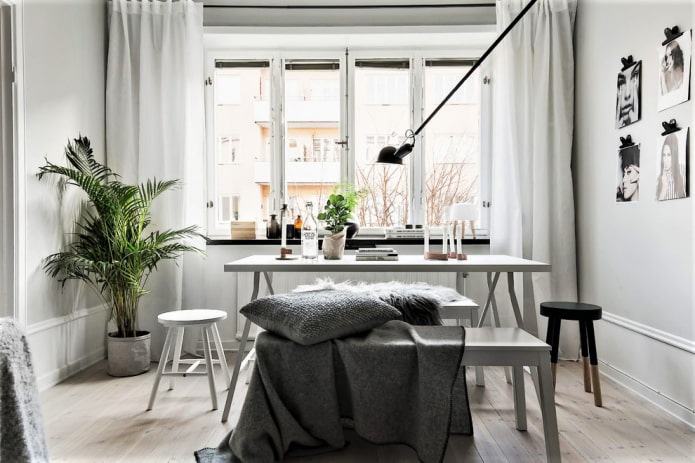
The photo shows a Scandinavian-style dining room, located by the window with linen curtains.
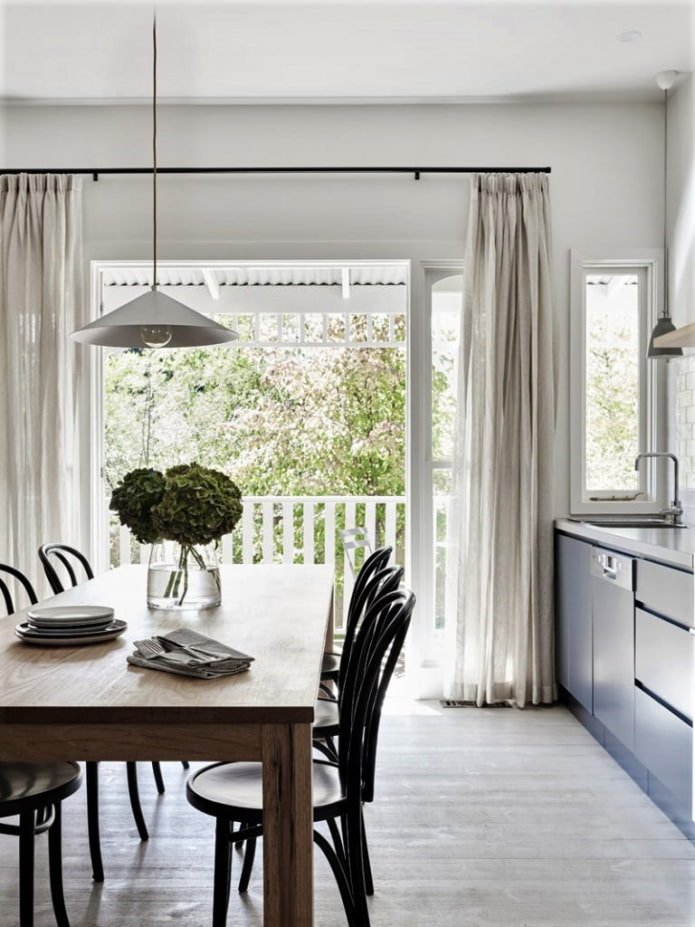
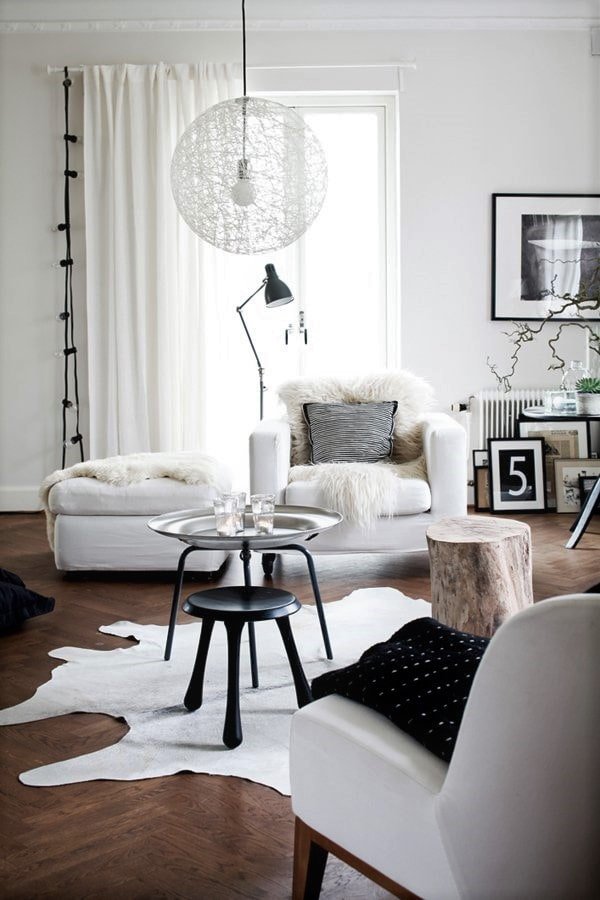
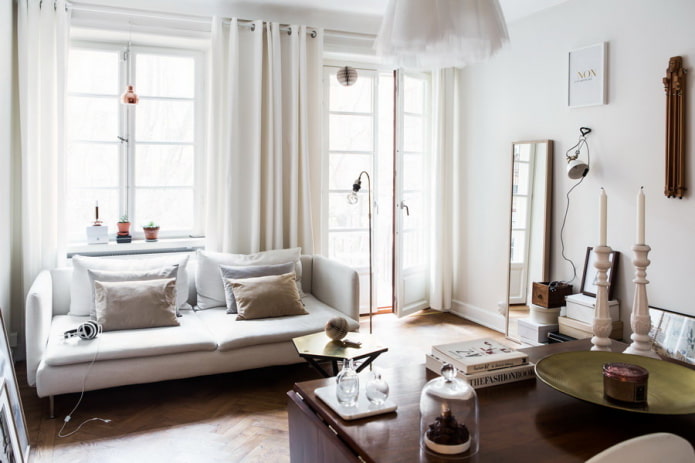
The photo shows a Scandinavian-style living room with milky-colored curtains.
What types of curtains are best used in interior?
In Scandinavian interiors, you can use both long flowing curtains and tulle, and short blinds. The main requirement for textile decoration of window openings is restraint, simplicity and ease of use.
Curtains
Long draped curtains, as a rule, translucent, do not prevent direct sunlight from entering the living space. They are often used without tulle, which creates a sense of unity with nature outside the window.
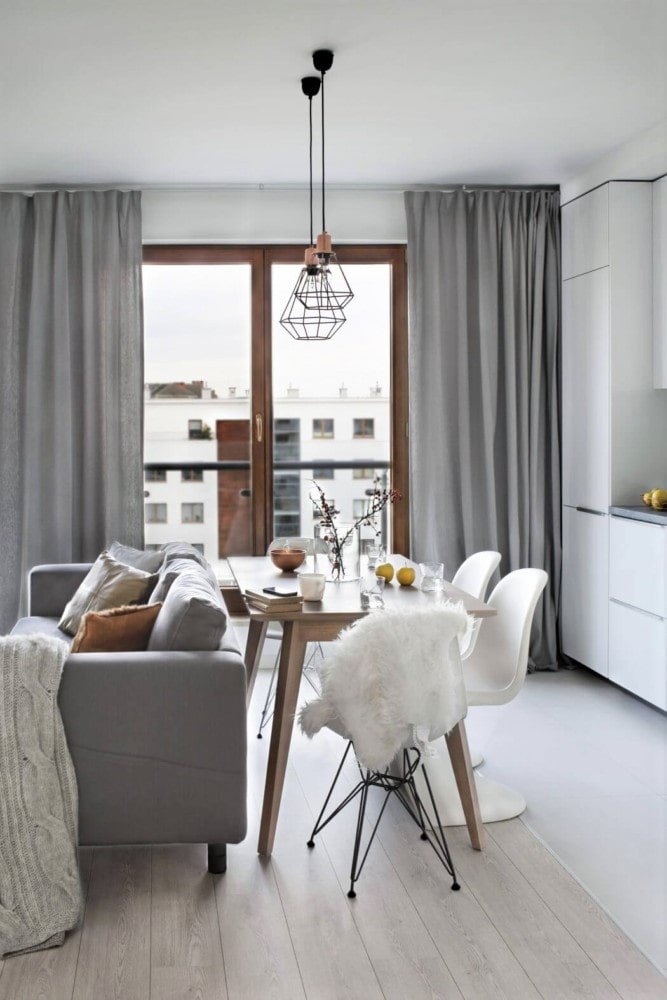
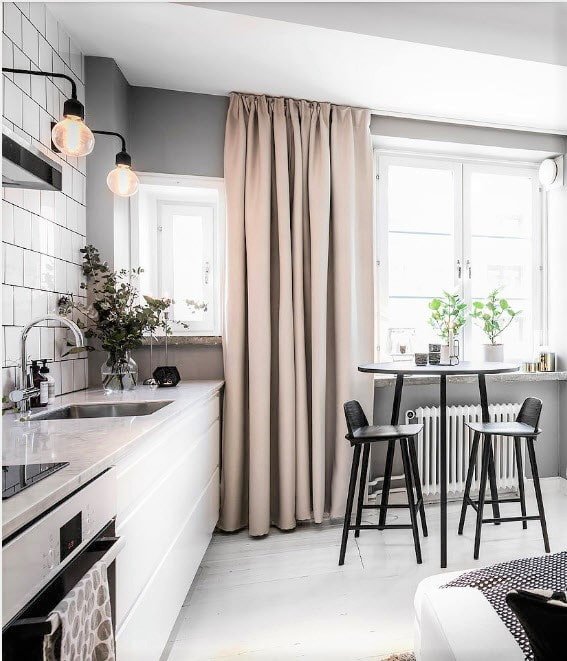
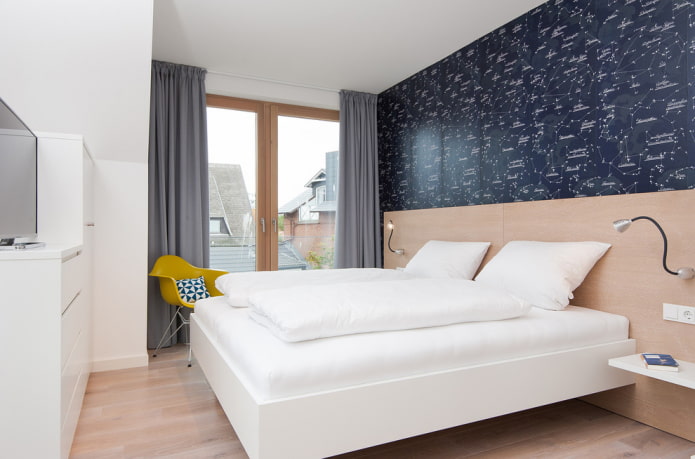
Curtains (tulle)
Curtains, or transparent tulle, are also found in Scandinavian interiors. They let in light well and decorate the window.
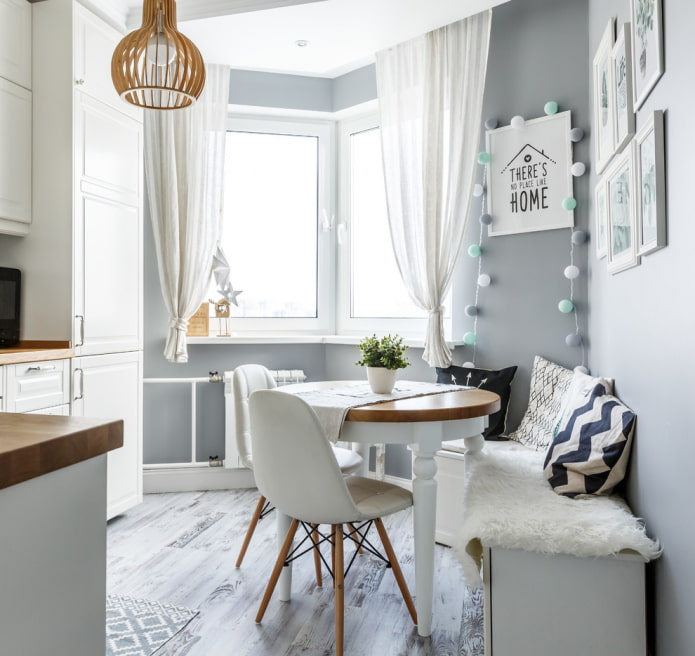

Roman blinds
Roman blinds are used as an independent element for window decoration, and as an addition to long curtains.
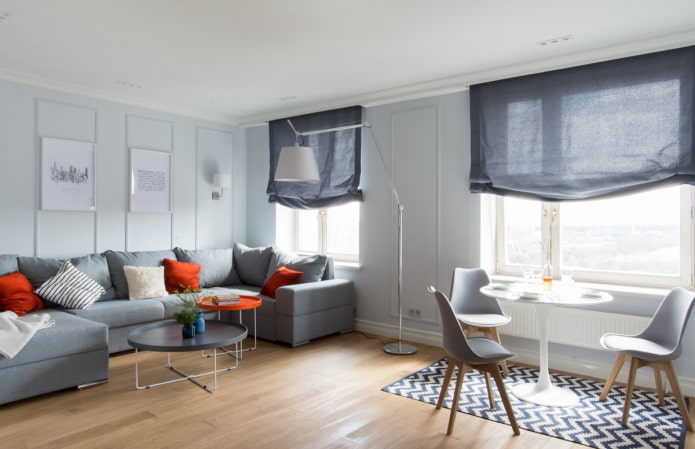
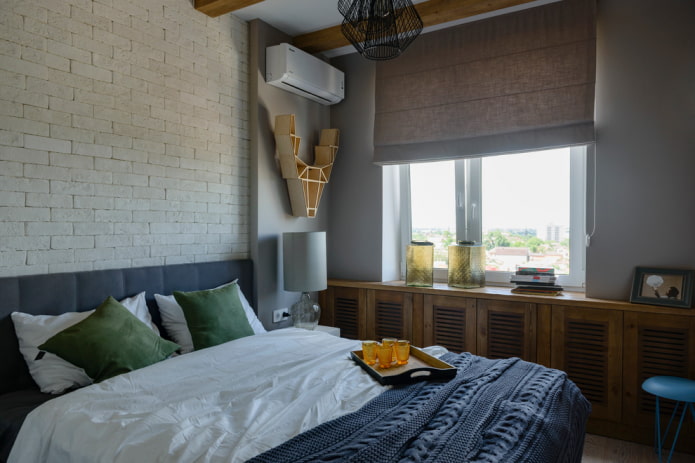
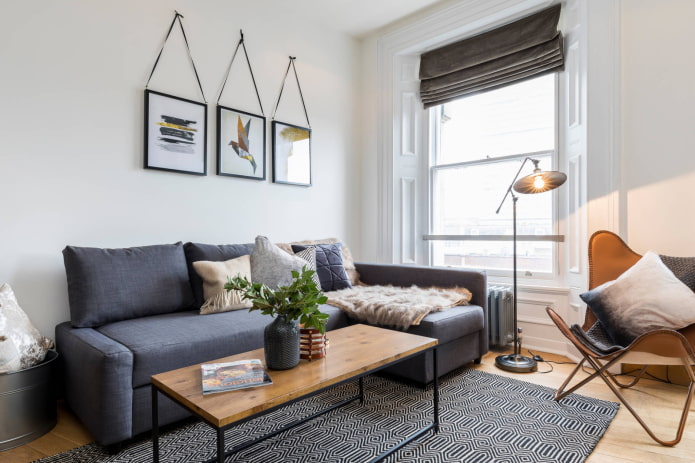
The photo shows a Scandinavian living room with Roman blinds made of cotton fabric.
Blinds
Blinds are quite common in Swedish design, as they have a laconic look and support the aesthetics of minimalism in the interior.
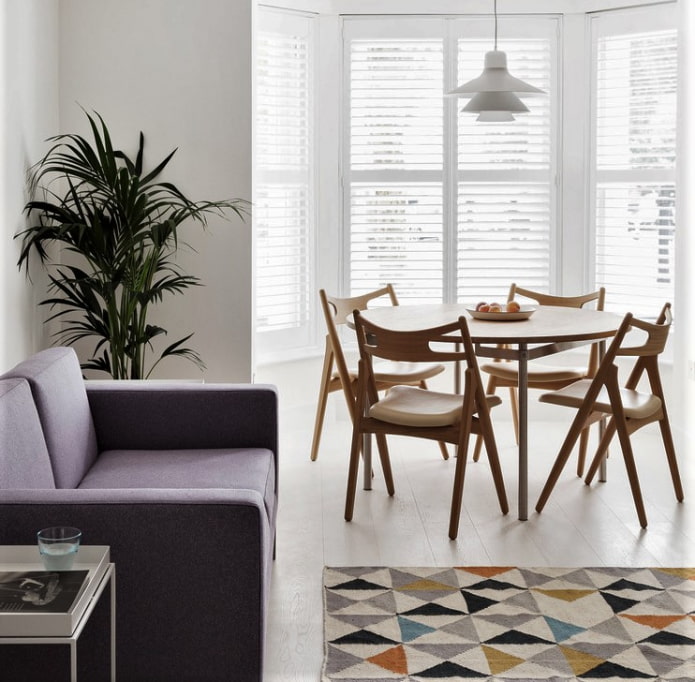
Roller blinds
Roller blinds also support the Scandinavian trend and are quite practical to use.
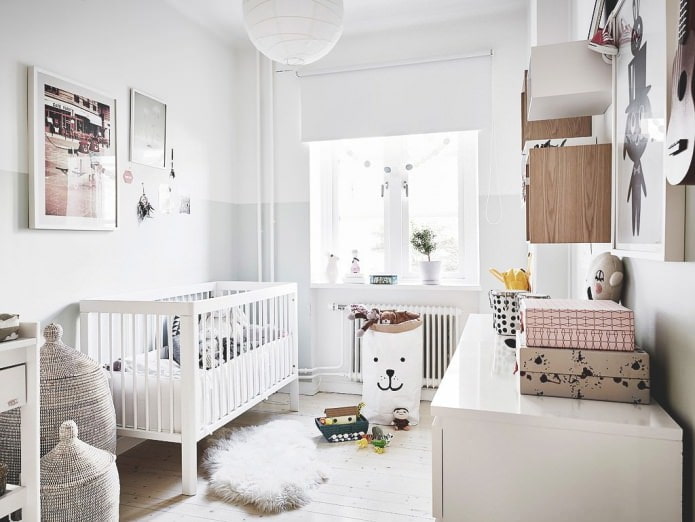

What material to choose for curtains?
Natural fabrics are used as material for curtains. It is practical, aesthetic and laconic, which best corresponds to the Swedish approach to interior design. The following materials are used in sewing curtains:
- Linen is a natural fabric woven from plant fibers and has a characteristic structure. Linen curtains are translucent, hygroscopic and durable. The fabric wrinkles easily, does not always drape perfectly, and this is precisely what characterizes the Scandinavian style, far from pretentiousness and pomposity. When determining the length of curtains, it is necessary to take into account that pure linen is prone to shrinkage, but if there is a small amount of viscose in the composition, the fabric becomes more static. Linen has natural colors, or is dyed in light shades.
- Cotton is a natural fabric of plant origin, quite dense and elastic. Its structure depends on the production method, thickness and configuration of the threads. The material is well dyed, which means it is an ideal option for colored curtains. They wrinkle slightly, are easy to drape, and do not interfere with the penetration of sunlight into the room.
- Chintz is a thin cotton fabric obtained by tightly weaving threads, due to which it becomes elastic and static. This allows the use of chintz for sewing roller and Roman blinds. Thin, translucent chintz curtains also fit perfectly into the Scandinavian style, they create a cozy atmosphere and are unpretentious in use. They can be either plain or colored.
- Muslin is a natural fabric woven from cotton, silk or wool. The properties of the material depend on the composition. Thus, the cotton component provides strength and uniformity of structure, the silk component makes the fabric smooth, thin and elastic, and wool gives structure and looseness. Muslin curtains have a soft texture, drape well and have unique tactile properties.
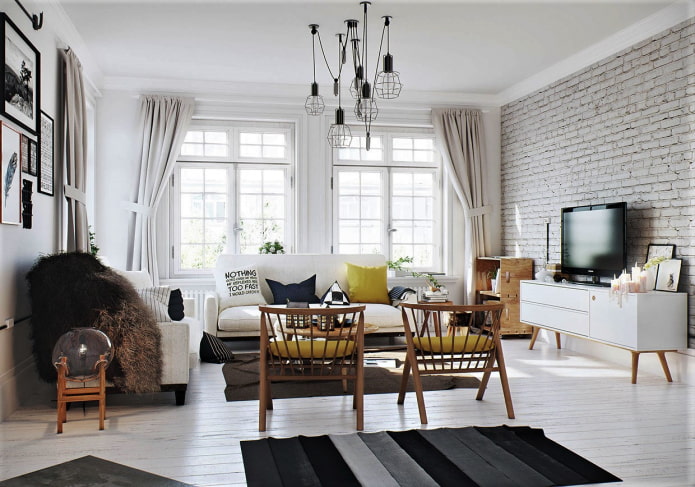
The photo shows a cozy living room in Scandinavian style with beige curtains with grabs.
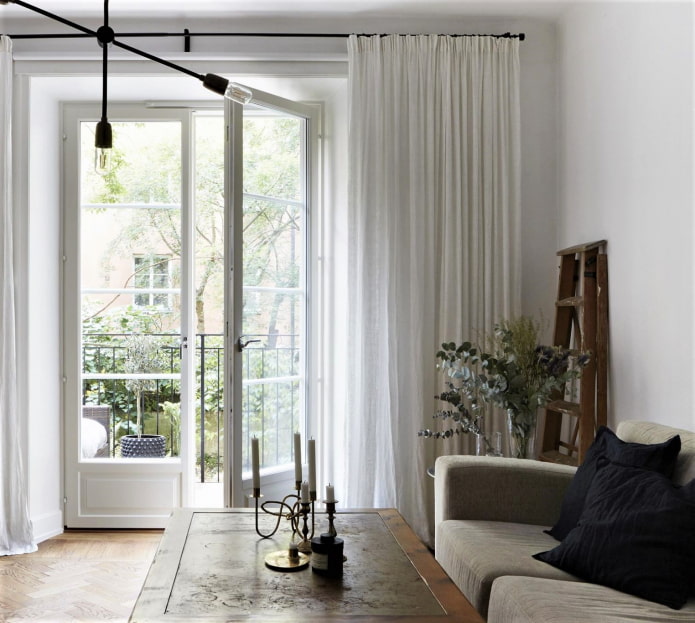
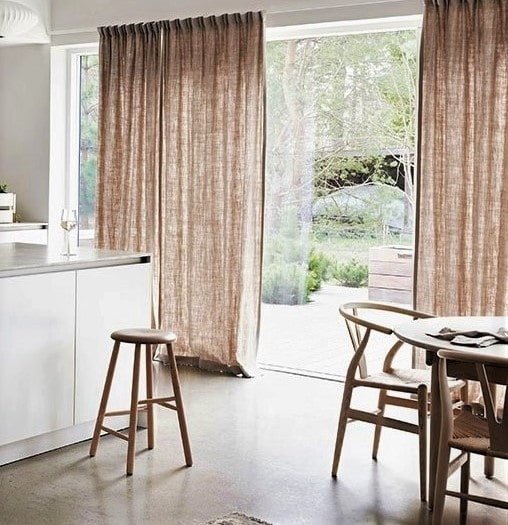
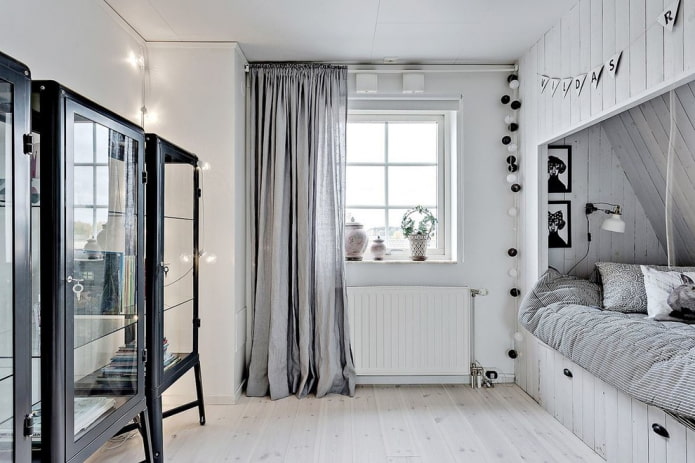
Types of Scandinavian curtain cuts
Window textiles provide for a simple cut and discreet design, but the use of accent details is allowed. For example, you can sew curtains on loops, with piping sewn on the top or bottom, or add stripes of fabric vertically. Various frills and lambrequins are not welcome, but you can use laconic grabs.
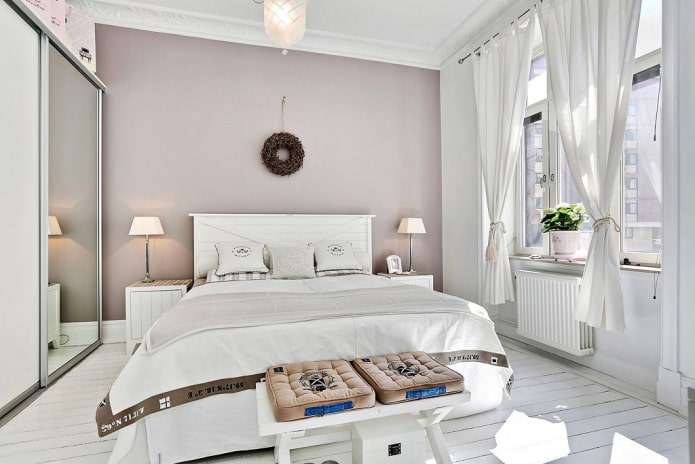
The photo shows a stylish bedroom in Scandinavian style with laconic curtains on loops.
Photo ideas in the interior of rooms
There are many options for window decoration depending on the purpose of the room.
Kitchen
Kitchen curtains in Scandinavian style open up the view outside the window as much as possible and let light into the room. This creates the necessary comfort for cooking and eating. Curtains can be long if space allows. In small kitchens, practical short, roller or Roman blinds are used.
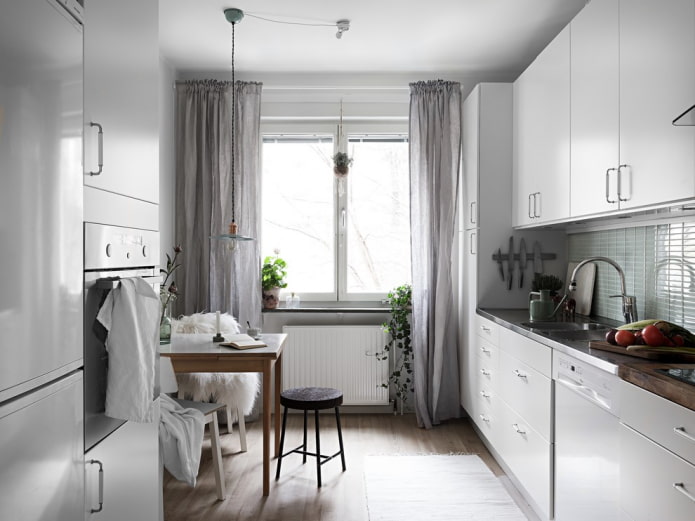
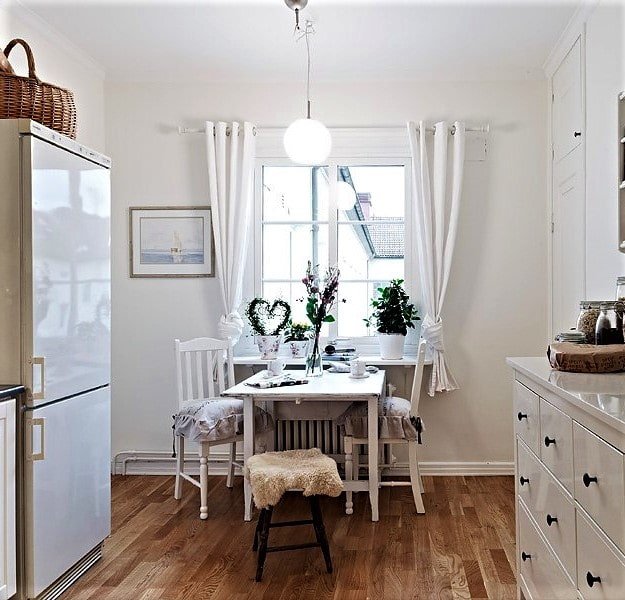
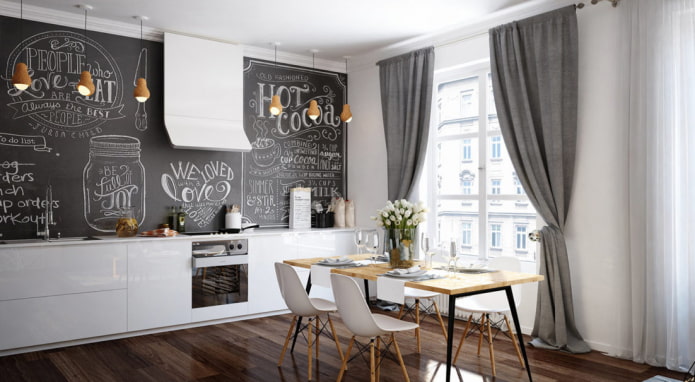
The photo shows a kitchen with an accent wall and dark curtains made of natural fabric.
Living room or hall
Curtains for the living room in the Swedish style bring home comfort and set the mood for relaxation with the family.
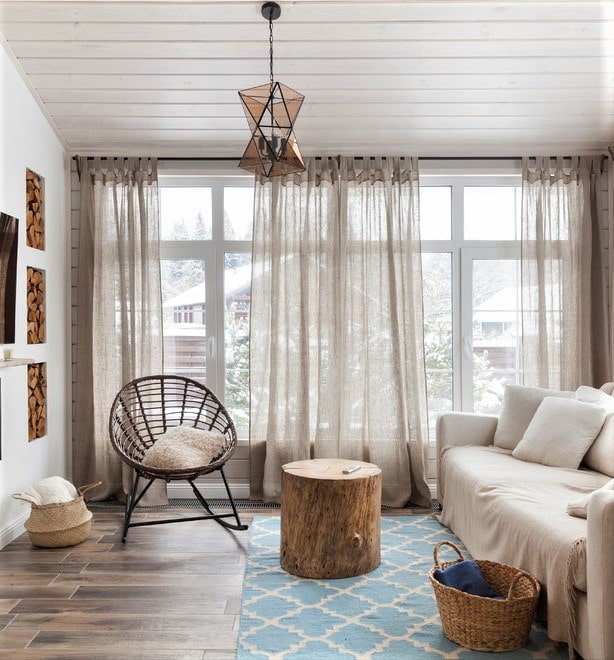
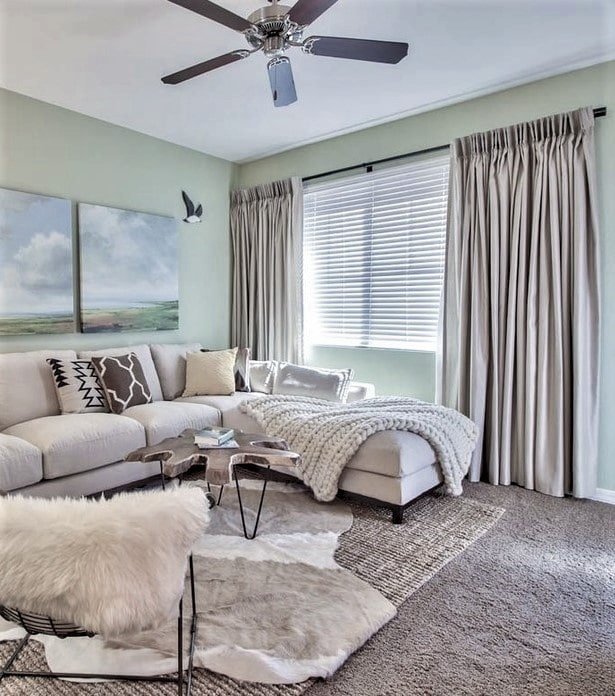
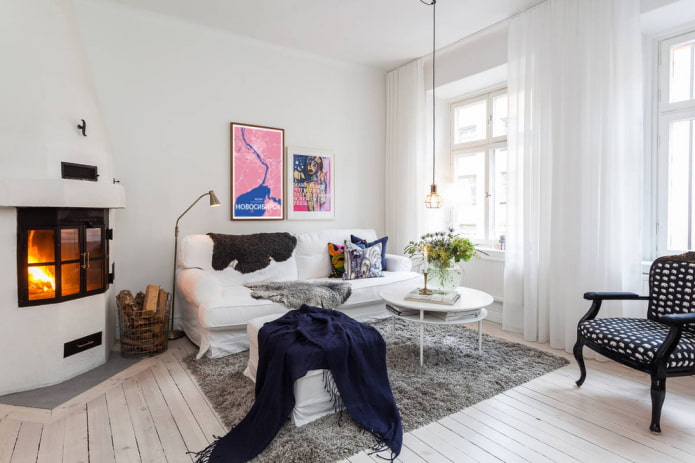
Bedroom
Curtains for a Scandinavian bedroom create a feeling of protection from the outside world, but do not overload the room.
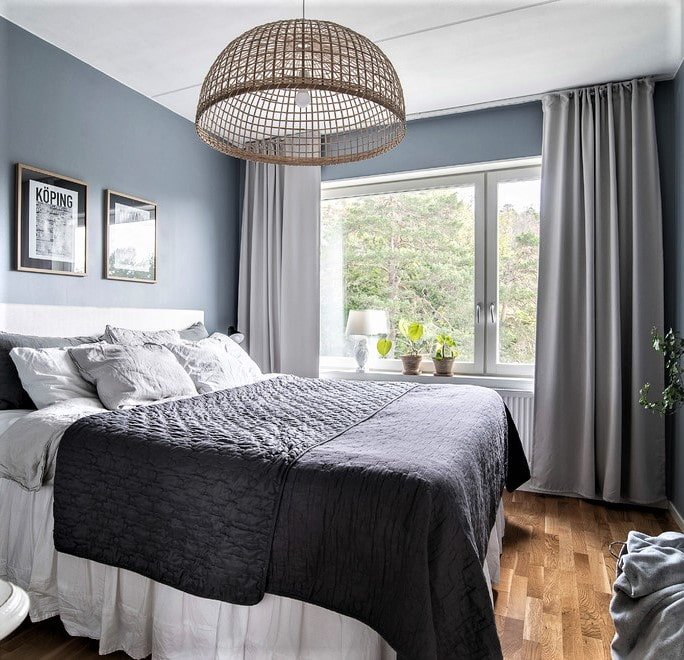
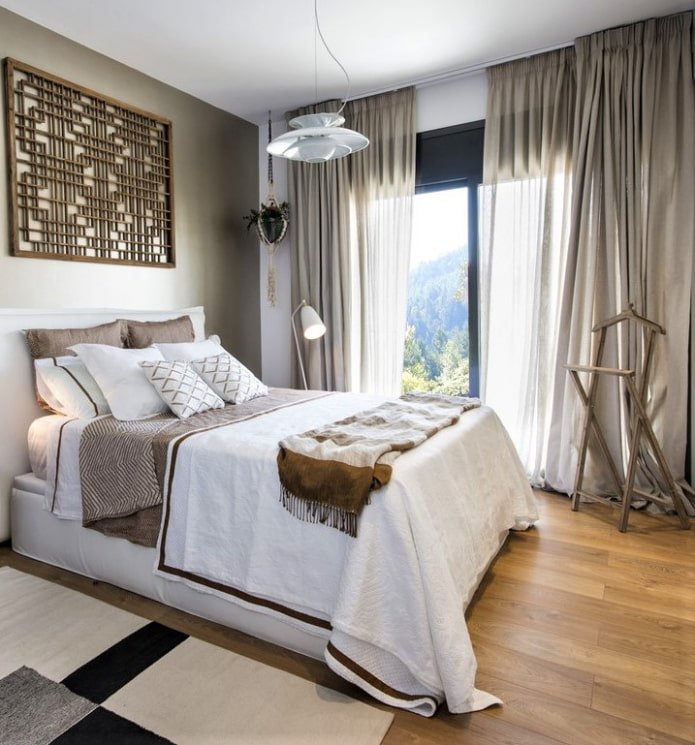
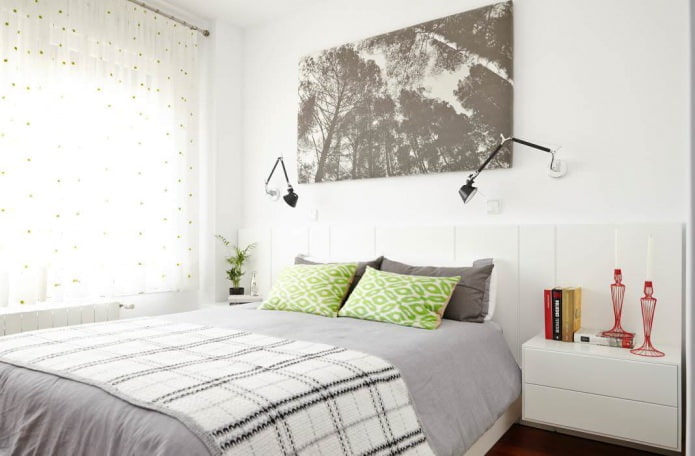
Children’s room
The world of the children’s room should be individual and special. In Swedish design, not only children’s toys, books, and decor are bright details, but also curtains.
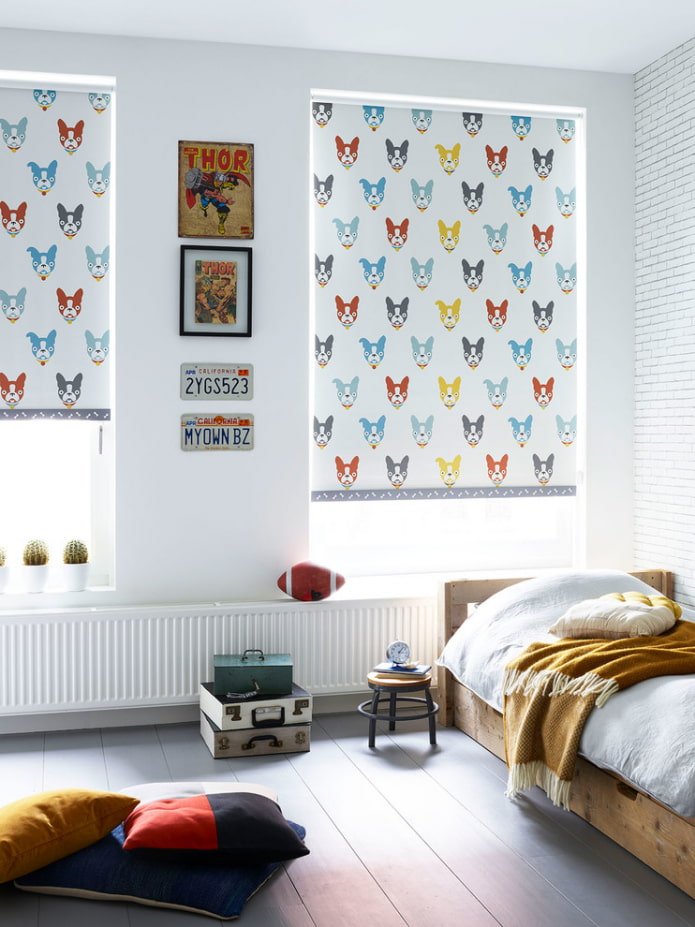
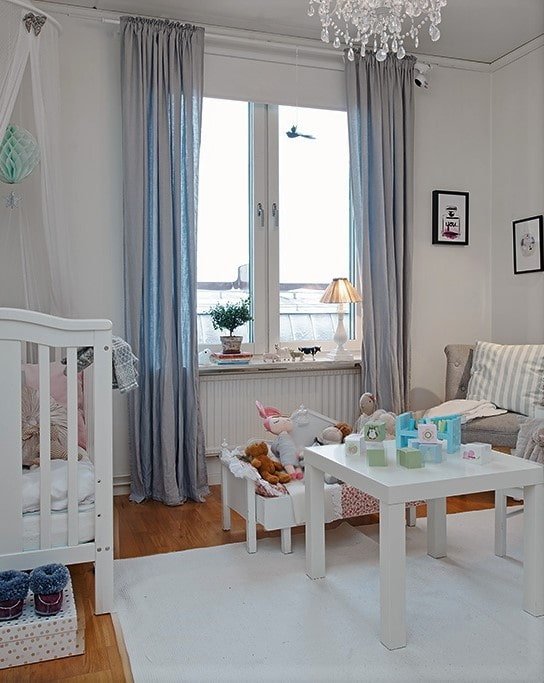
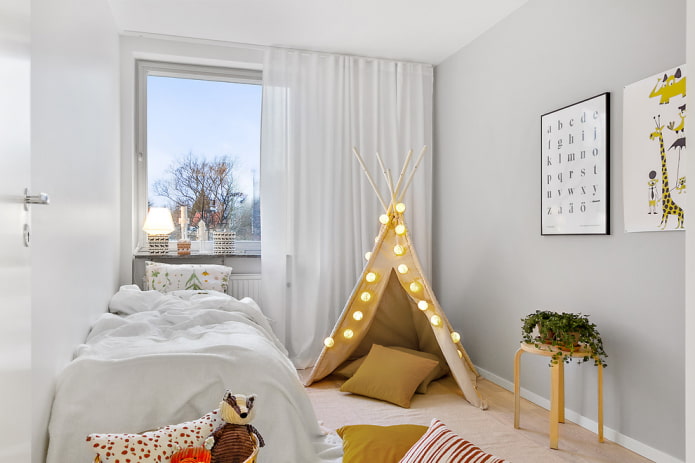
Loggia or balcony
According to the Scandinavians, curtains on the loggia or balcony should not block the view of the beautiful landscapes outside the window.
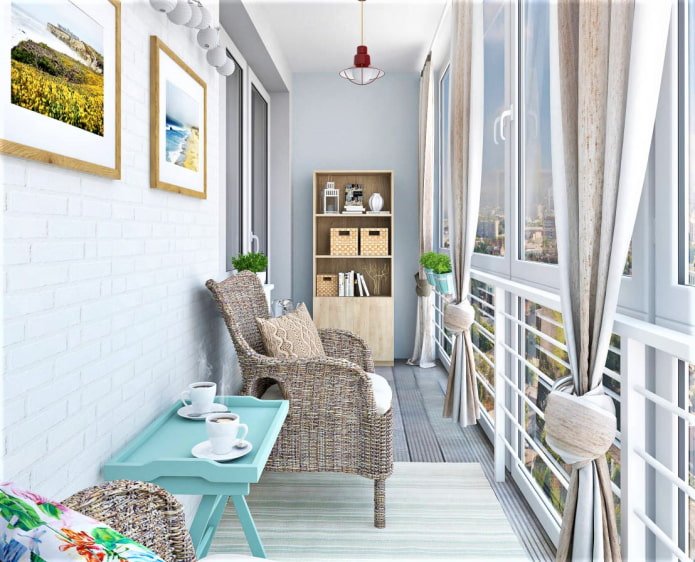
The photo shows a loggia with a seating area and stained-glass windows framed by curtains.
Color scheme
Curtains in the Scandinavian style should either dissolve in the overall color scheme, or create an accent in the interior. If this is a soft, muted color palette, pastel colors, then the most delicate curtains, light shades will do. If the interior is made up of contrasts, then you can use curtains with a geometric pattern inherent in this particular style, for example, zigzag, stripes or a repeating pattern.
The most acceptable colors for curtains:
- White – will make the interior light and airy.
- Gray – will combine white walls and black decor into a single ensemble.
- Turquoise – will shade the cold colors of the Scandinavian interior.
- Yellow – will enliven the interior and add sunlight.
- Beige – will create an atmosphere of warmth and comfort.
- Pink – will add softness to the room.
- Blue – will add elegance to the interior.
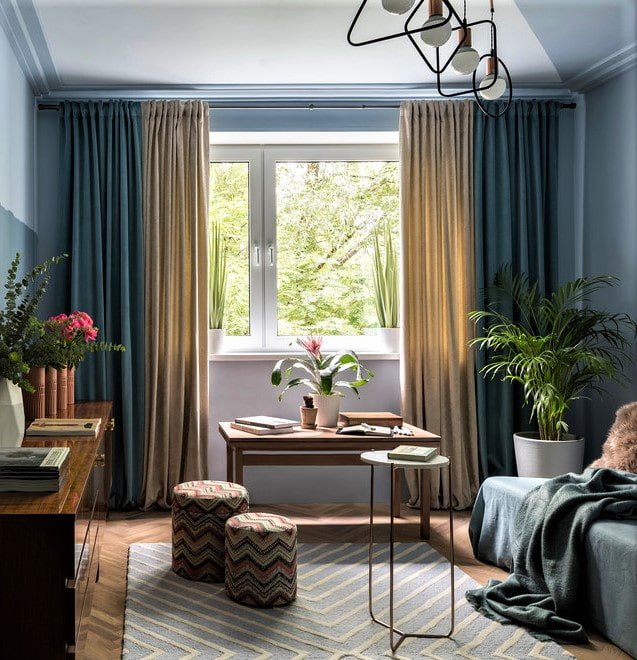
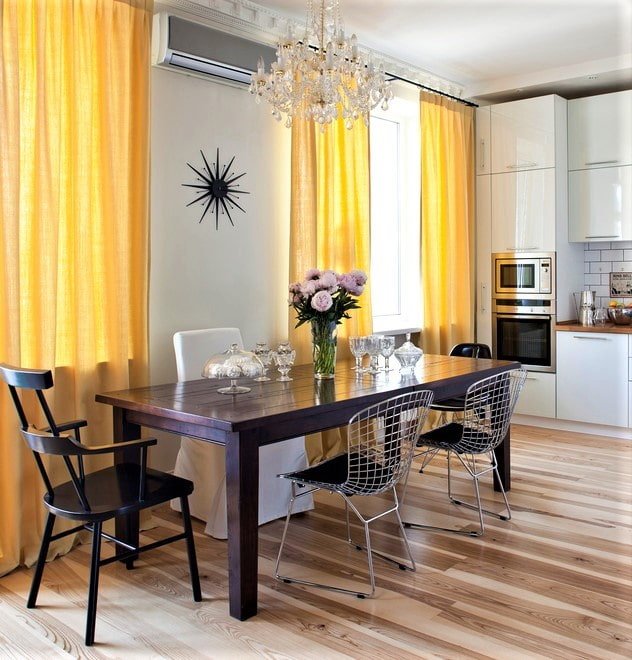
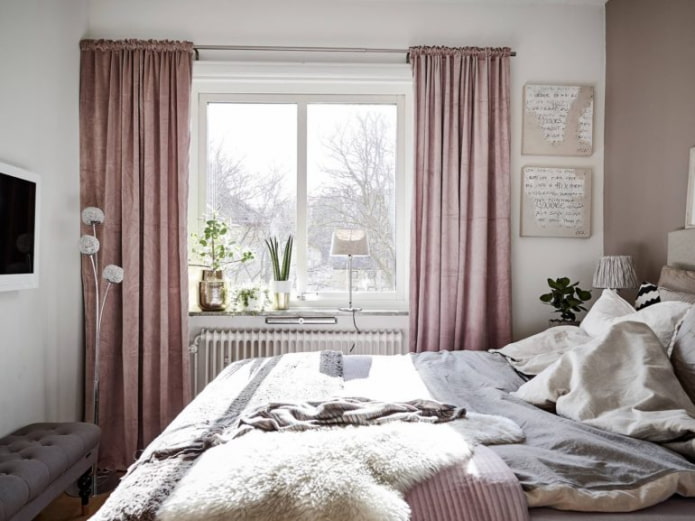
The photo shows a cozy bedroom in Scandinavian style with pink curtains.
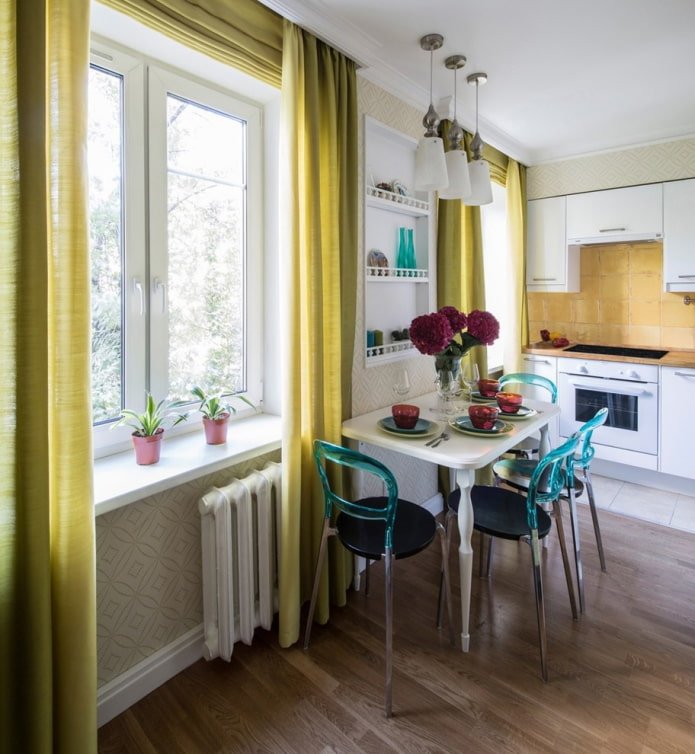
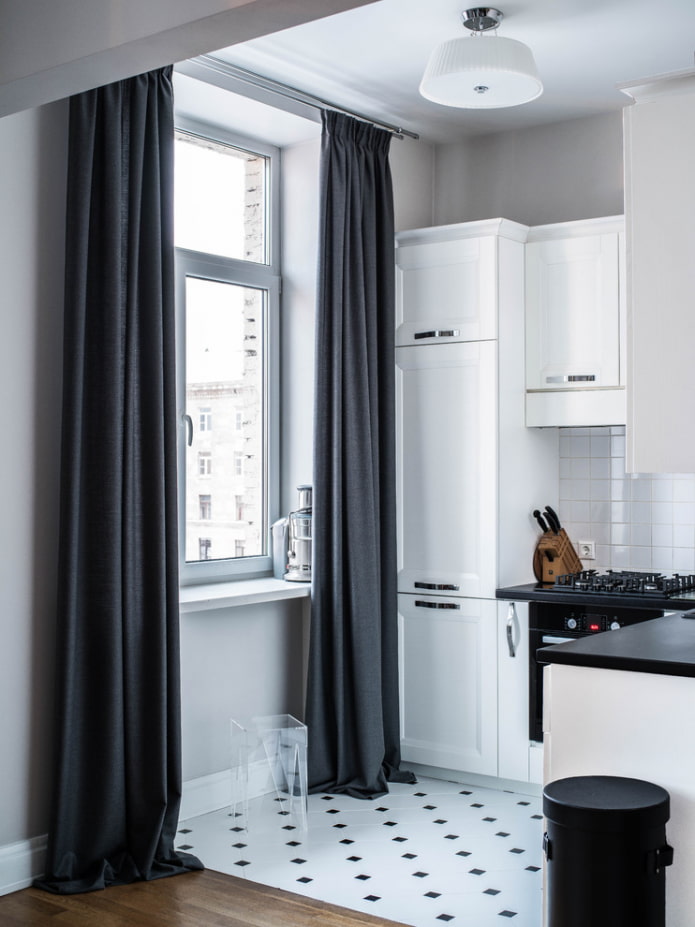
Recommendations for choosing a curtain rod in Scandinavian style
Scandinavian interiors use the simplest and most laconic curtain rods, usually single ones.
By type of fastening, there are:
- Round curtain rods with wall fastening. Curtains equipped with loops, rings or eyelets are strung on them. Such curtain holders are convenient in everyday life and act as a decorative element when decorating windows in Scandinavian style.
- Flat ceiling cornices that are as invisible as possible in the interior. In this case, special tape and hooks are used to hang curtains. Such cornices can be hidden in a specially arranged niche under the ceiling, which allows you to achieve the effect of “floating” curtains.
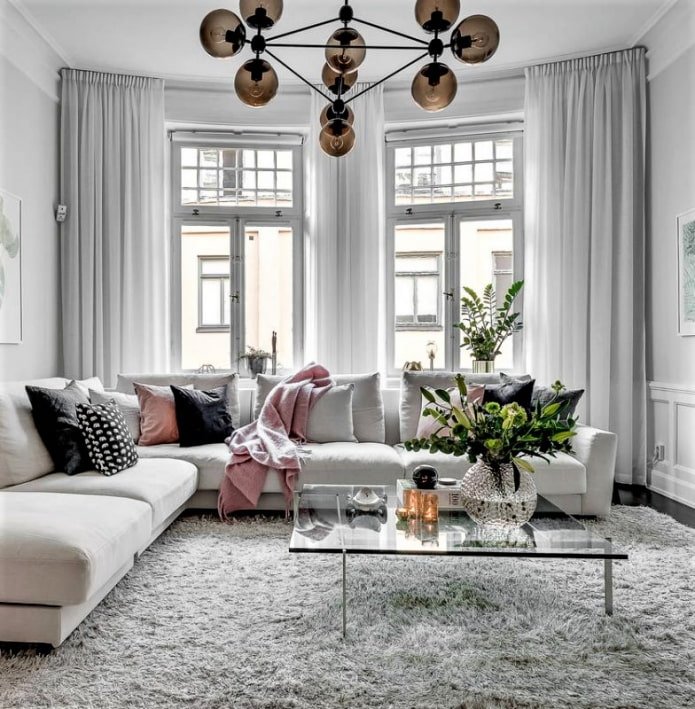
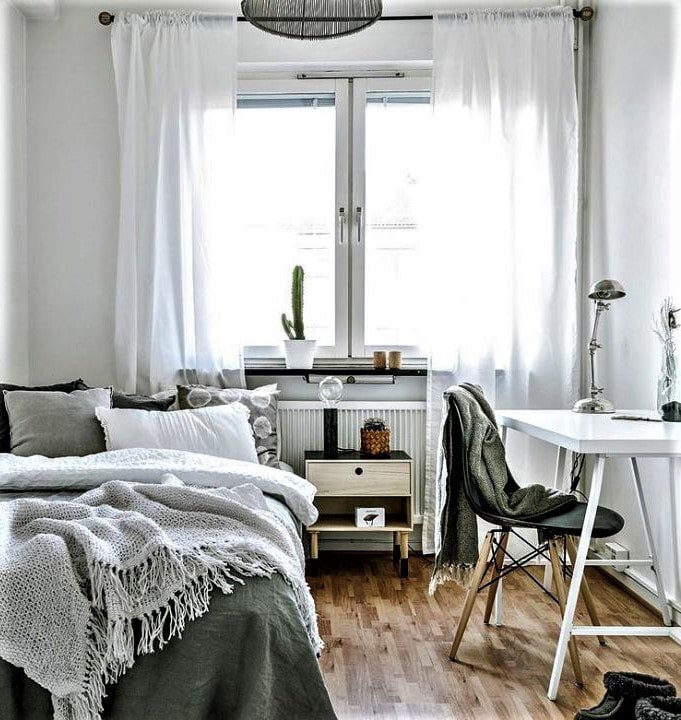
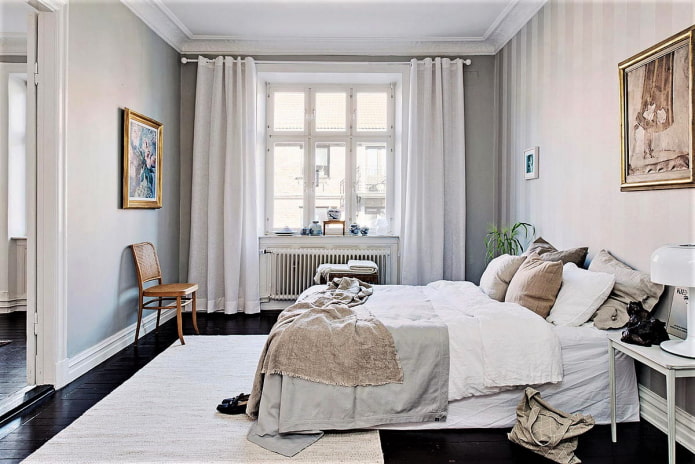
The photo shows a Scandinavian bedroom with linen curtains.
Now reading:
- Comprehensive Guide to Buying a Used Opel Vivaro
- Olive shade in the interior: more than 70 photos and design ideas
- Your Ultimate Guide to Buying a Pre-Owned Nissan Juke
- Narrow Bedrooms: 55 Photos, Design Inspiration and Furniture Arrangement
- Modular kitchens: 32 examples in the interior and their differences from built-in solutions